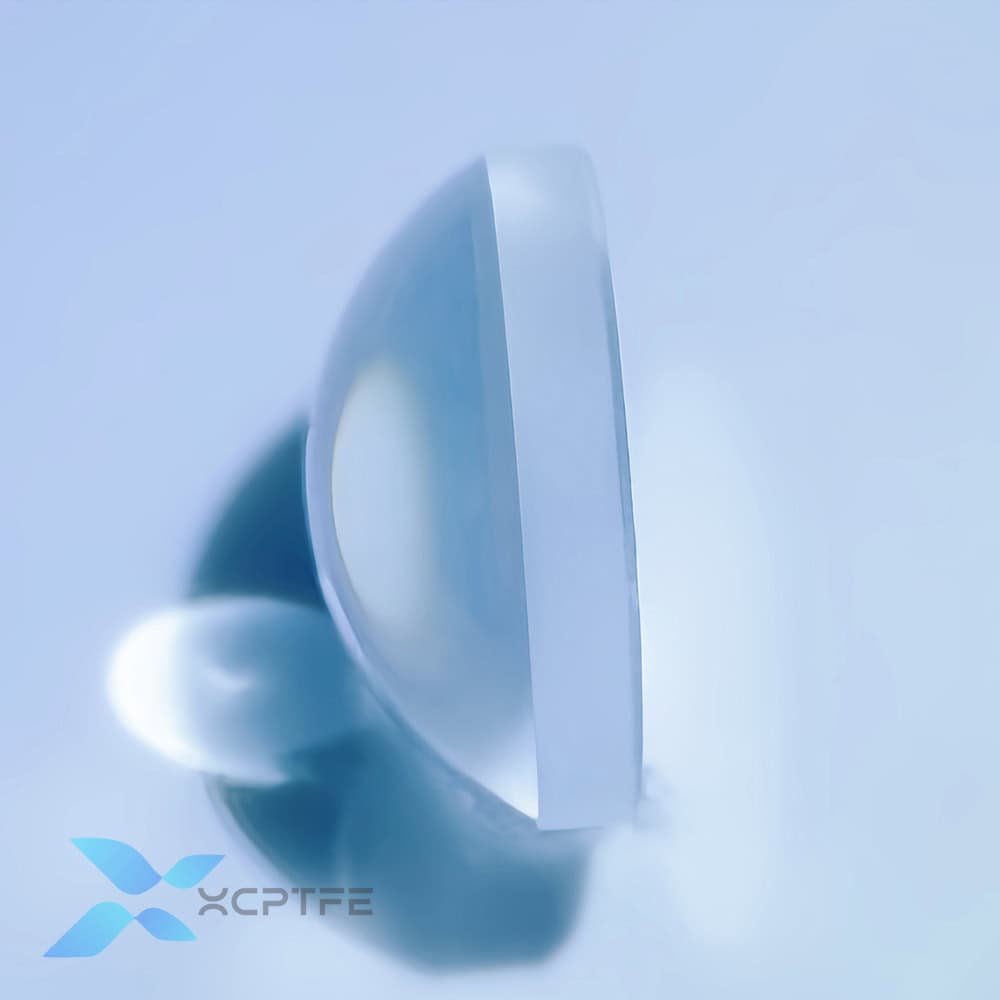Plano-Convex Lens
Custom Fabrication
Custom Fabrication
Any question you want to know, just to contact email: cusoptics@micquartz.com.
What is plano-convex lens?

A plano convex lens is an optical lens with one side being flat and the other side being convex. It is an important member of the converging lens family, and due to its unique characteristics, it has advantages over biconvex lenses in specific applications.
Features
Shape: One surface is completely flat, and the other surface is a spherical surface protruding outward. The lens has a thick center and thin edges.
Optical function: converging lens. Like a biconvex lens, it can deflect parallel incident light towards the main optical axis and converge it to a focal point, with a positive focal length (+).
Asymmetry: Its asymmetric structure is its most critical feature, which means that light entering from the plane side and from the convex side will produce different optical effects.
How does plano-convex lens work?
The core advantage of a plano convex lens is to minimize spherical aberration to the greatest extent possible.
Minimize aberration: When parallel light is incident from a convex surface, the light is refracted on the curved convex surface and then emitted at the minimum deflection angle on a flat plane. This “one refraction, one pass” approach significantly reduces the spherical aberration caused by the curvature of the lens surface (i.e. the problem of edge rays not coinciding with the focal point of the center ray). This is the most commonly used and optimized direction for the use of plano convex lenses.
Imaging: It can also form real and virtual images, but its imaging quality (especially when the object is at a finite distance) is still affected by aberrations and is usually not as good as composite lens groups.
Application
The design of plano convex lenses enables them to perform well in situations where collimated light needs to be processed or focused:
Focusing collimated light: This is its most classic application. Used to focus a collimated parallel beam of laser or fiber optic output onto a point (such as in laser marking, cutting, engraving systems), or vice versa, to collimate the light emitted by a point light source into a parallel beam (such as in LED collimated lighting and flashlights).
Optical lighting system: widely used as a spotlight in projectors, condenser systems, and various lighting equipment to efficiently collect and converge light rays.
Field lens of imaging system: In complex imaging systems, it can be used as a field lens to adjust the optical path and reduce the aperture requirements of subsequent lenses.
Simple magnifying glass: It can also be used as a single magnifying glass.
Advantages & Limitations
Advantage:
Less aberration: When used for infinite conjugation (i.e. processing parallel light), its spherical aberration is smaller than that of a biconvex lens with the same focal length.
Low manufacturing cost: A flat surface makes it relatively easier to manufacture and polish, and the cost may be lower.
Easy to install: The flat side can be easily installed or pasted on other flat surfaces.
Limitations:
Direction of use: Attention must be paid to the incident direction of light in order to achieve optimal performance. If the direction is reversed, aberrations will significantly increase.
There are still aberrations: Although the spherical aberration has been reduced, there are still other aberrations such as chromatic aberration, which are not suitable for the highest precision imaging applications.
Send Us A Message

